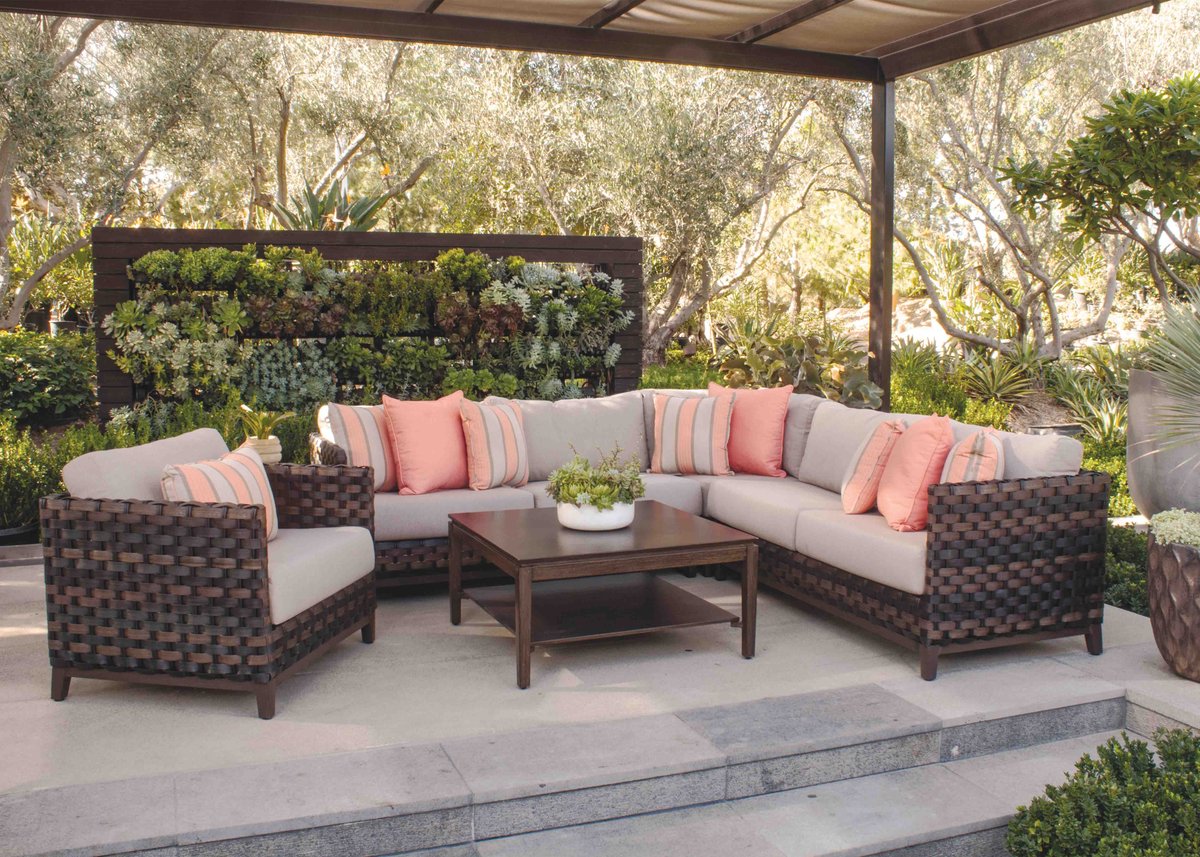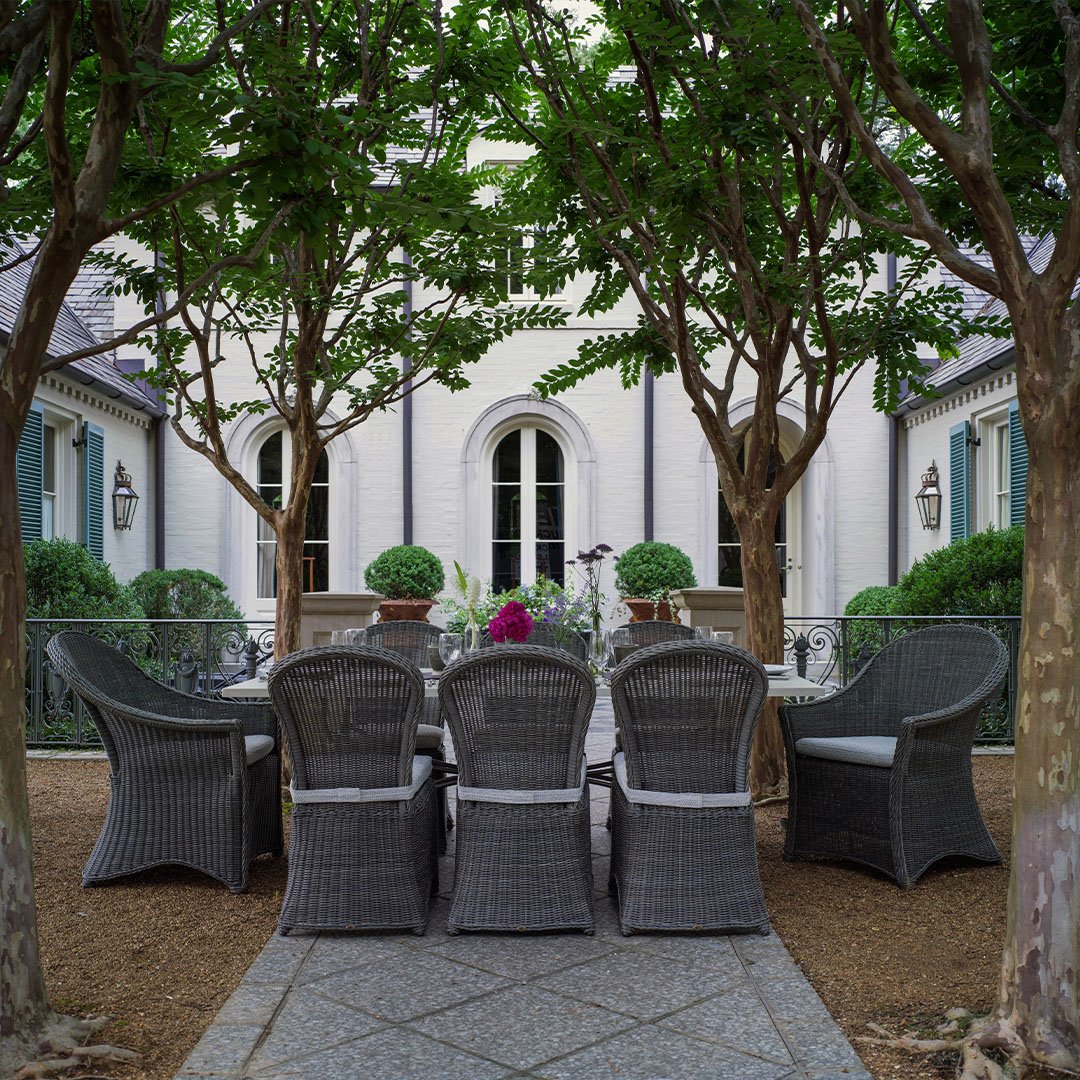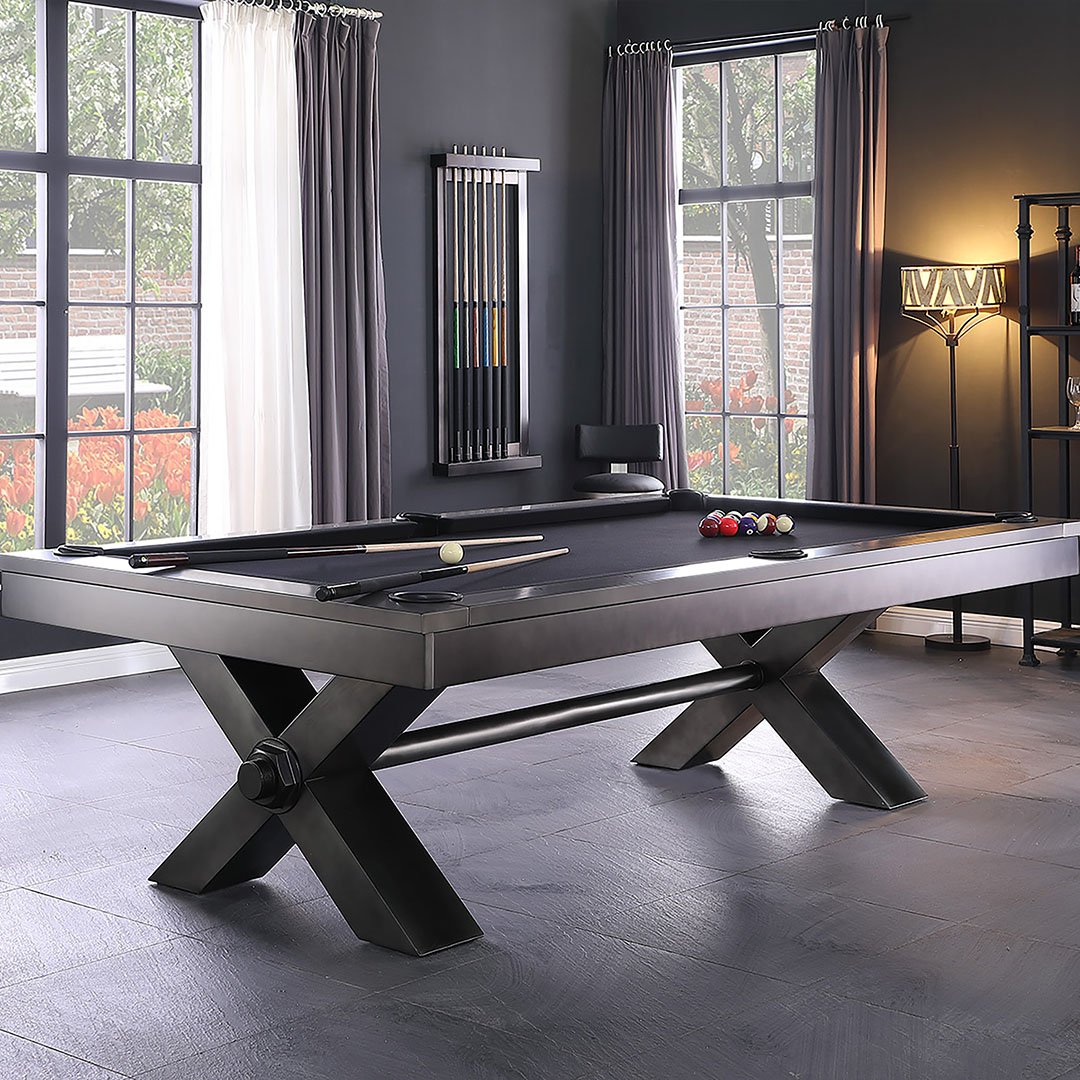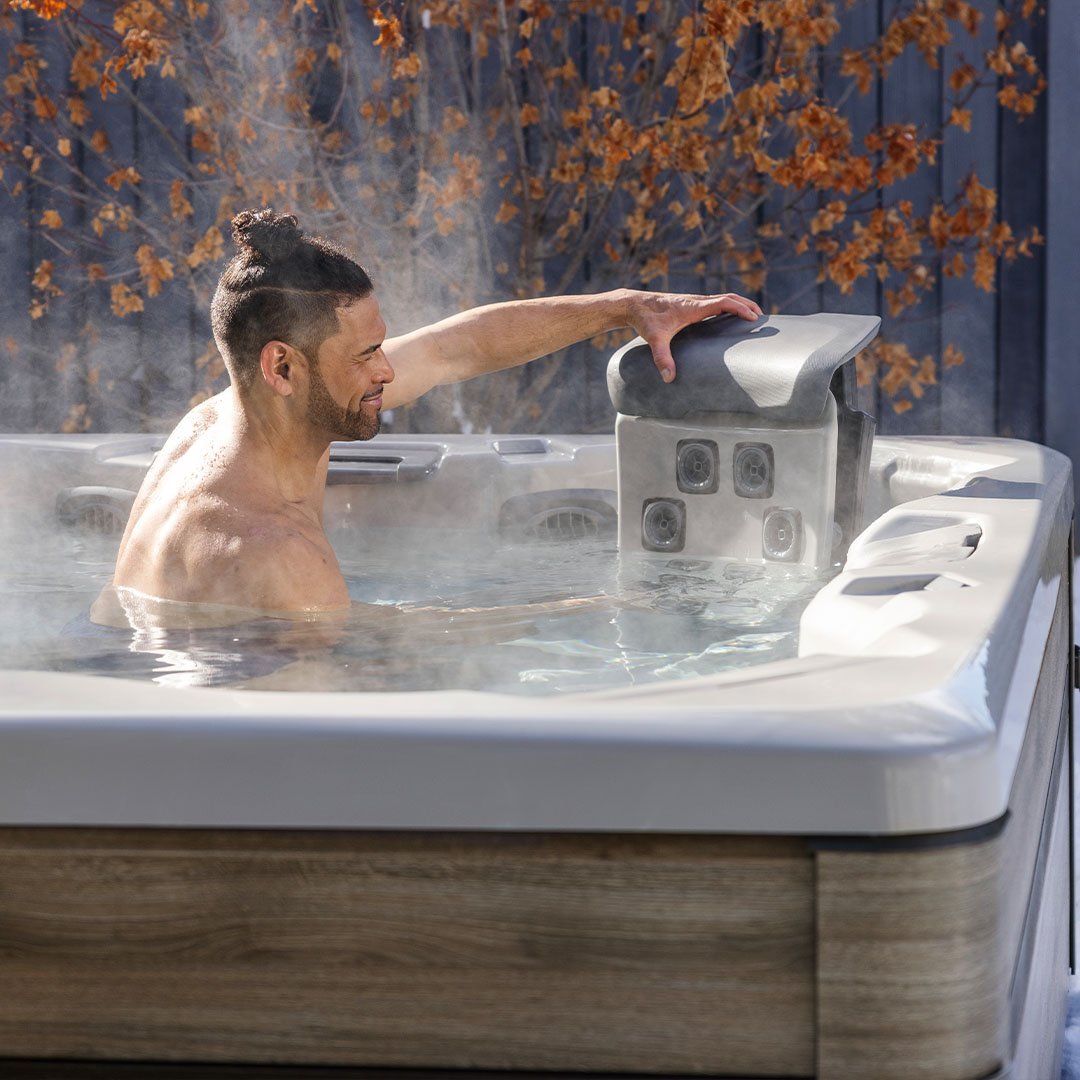Choosing the Right Material: Weather-Resistant Outdoor Furniture
When it comes to furnishing your outdoor living space, choosing weather-resistant furniture that can withstand the elements is incredibly important. Outdoor furniture has to endure exposure to the elements, making proper material selection a key factor in its longevity. From rain and moisture resistance to sun and temperature tolerance, many different factors must be considered to make an informed decision. This ultimate guide will explore the ins and outs of different outdoor furniture materials to help you choose the perfect weather-resistant outdoor furniture option that aligns with your lifestyle.

Understanding Weather-Resistant Furniture Materials
When choosing outdoor patio furniture, one of the first considerations should be the materials' resistance to weather conditions. Choosing the right furniture for your backyard, deck, or patio isn't just about visual appeal, but also the durability and longevity of the materials against various climatic conditions. This is where weather-resistant outdoor furniture materials play a vital role.
Characteristics of Weather-Resistant Materials
Weather-resistant materials are designed with specific characteristics that enable them to withstand the elements. These materials are meant to be moisture-resistant, fade-resistant, and capable of withstanding temperature fluctuations. They are also durable, sturdy, and often low-maintenance, making them suitable for outdoor use. Understanding these characteristics will help you choose the right material for your specific needs and climate.
Common Types of Weather-Resistant Materials
Commonly used materials for outdoor furniture include teak wood, synthetic materials like resin wicker and polyethylene, and metals such as aluminum and steel. Teak wood is known for its durability and natural resistance to weather conditions. Synthetic materials, including the likes of resin wicker, are famous for their resistance to moisture and UV rays. Metals like aluminum and steel offer durability, strength, and the ability to withstand various climatic conditions.
Benefits of Choosing Weather-Resistant Outdoor Furniture
Choosing weather-resistant fabrics for outdoor furniture comes with numerous benefits. The most apparent benefit is the long-term savings gained from not having to replace your patio furniture frequently. Weather-resistant materials are robust and durable, allowing them to serve you for extended periods, regardless of your area's climate. This makes them a cost-effective choice for your outdoor area. Not to mention, the low maintenance needs of weather-resistant materials, coupled with their aesthetic appeal, make these materials an ideal choice for any outdoor space.
For more information about choosing the right outdoor furniture for your space, see our Comprehensive Outdoor Furniture Guide.
Analyzing Different Types of Weather-Resistant Outdoor Furniture
Selecting weather-resistant materials is crucial to ensure longevity and durability when it comes to outdoor furniture. Different types of materials offer unique characteristics and benefits that make them suitable for outdoor use.
Wood: Teak, Eucalyptus, and Acacia
Among the various types of outdoor furniture materials, teak wood stands out due to its high oil content, tight grain, and natural durability. It's highly resistant to inclement weather conditions, insects, rotting, and splintering, making it ideal for garden furniture. Similarly, Eucalyptus and Acacia also provide robustness and durability.
Eucalyptus is a durable hardwood that offers a similar appearance to teak but comes at a more affordable price point. However, eucalyptus requires regular maintenance to preserve its golden hue. Acacia wood, native to Australia, is dense yet lightweight, making it easy to move and store. It has a golden yellow color and a distinctive wood grain texture. However, acacia should be protected from prolonged exposure to weather and is best suited for covered or shaded areas. Outdoor rocking chairs made of these woods can be a great addition to any outdoor space.
Metal: Aluminum, Steel, and Wrought Iron
Outdoor furniture made from metal is known for its strength, durability, and resistance to weather elements. Aluminum is a lightweight and rust-resistant material that is a popular choice for outdoor use. It requires minimal maintenance and is available in various styles and designs. Stainless steel and wrought iron are heavier options known for their sturdiness and longevity. They can withstand strong winds and harsh weather conditions, but proper rustproofing and maintenance are necessary to prevent corrosion.
Synthetic: Resin Wicker, Polyethylene, and Polypropylene
Synthetic materials offer a practical and weather-resistant alternative for outdoor furniture. Resin wicker, made from synthetic fibers, provides a traditional look similar to natural wicker but with enhanced durability, UV resistance, and water resistance. Polyethylene and polypropylene are commonly used for outdoor furniture due to their resistance to moisture, rot, and fading. These materials are lightweight, low-maintenance, and come in a variety of styles and colors.
Buying Considerations for Weather-Resistant Outdoor Furniture
When purchasing outdoor furniture, it's important to consider various factors to ensure you make the right choice for your needs and preferences. Here are some key considerations when buying weather-resistant outdoor furniture:
Weather Conditions in Your Region
Understanding the climate and weather conditions in your region is crucial in selecting appropriate outdoor furniture. Consider the average temperature, humidity levels, rainfall, and exposure to sunlight. Hot and dry conditions can cause wood to splinter and crack, while frequent moisture can lead to rot. Strong winds can affect lightweight furniture like aluminum, and the sun can fade and degrade certain materials. Take into account the specific weather challenges in your area to choose furniture that can withstand and thrive in those conditions.
Budget Considerations and Cost Comparisons
Establishing a budget for outdoor furniture is important, as prices can vary significantly depending on materials, brand, and design. Determine your budget range and explore options within that range. It's worth noting that investing in higher-quality furniture often pays off in the long run, as it tends to be more durable and resistant to weather elements. Compare prices and features to find a balance between quality and affordability. Consider the lifespan of the furniture and the potential maintenance or replacement costs over time.
Furniture Design and Aesthetics Based on Material
The design and aesthetics of outdoor furniture play a significant role in enhancing outdoor spaces. Different materials offer varying styles, colors, and textures. Consider the overall look and feel you want to achieve in your outdoor area. Wood furniture, such as teak or acacia, provides a natural and classic appeal. Metal options like aluminum or wrought iron can offer a sleek and contemporary look. Synthetic materials like resin wicker or polyethylene can provide versatility and a wide range of design options. Choose a material that complements your outdoor aesthetic and aligns with your personal preferences.
How to Choose the Perfect Fabric for Your Outdoor Furniture
Selecting the right fabric for your outdoor furniture is essential to ensure its durability, comfort, and aesthetic appeal. Here are some guidelines to help you choose the perfect fabric for your outdoor furniture:
Types of Outdoor Fabric
There are various types of outdoor fabrics available, each with its own advantages and considerations. Acrylic and polyester fabrics are commonly used for outdoor furniture. Acrylic fabrics, particularly solution-dyed ones, are softer and more resistant to water, although they are not waterproof. Printed acrylic or polyester fabrics offer a less expensive option but may fade faster. Vinyl fabric is another choice, providing affordability but with limited use. Cotton fabrics and jute rope materials are also popular choices for outdoor furniture, but other options might be better suited to handle fluctuating weather conditions.
Water-Resistant vs. Waterproof Fabrics
Understanding the difference between water-resistant and waterproof fabrics is crucial when choosing outdoor furniture fabric. Waterproof fabrics are treated to create a complete barrier against water, offering the highest level of protection. On the other hand, water-resistant fabrics are woven to repel water but do not provide complete resistance. These fabrics offer a medium level of protection and can withstand light moisture.
Factors to Consider When Shopping for Outdoor Fabric
Be sure to consider the specific needs of your outdoor space when shopping for outdoor fabric. Determine whether water-resistant fabric will be sufficient or if you require waterproof materials. Look for water-resistant cushions, pillows, and curtains that suit your style and needs. If you prefer a more customized approach, consider purchasing outdoor fabric by the yard to craft your own cushions, curtains, or pillows. Check the fabric specifications to ensure it meets your requirements for water resistance.
For more information on selecting the perfect weather resistant outdoor fabric visit our comprehensive blog on weather resistant fabrics for outdoor furniture.
Caring for Outdoor Fabrics
To maintain the longevity of outdoor fabric, proper care is essential. While most outdoor fabrics are water-resistant, they are not waterproof. If the fabric gets wet, prop cushions on their sides to facilitate drying. Promptly clean any spills by scrubbing with mild soap and warm water. Avoid drying outdoor fabrics and be mindful of their exposure to sunlight, as some fabrics may fade more quickly than others. Consider the fabric composition and choose materials that are resistant to fading.
Outdoor Furniture Built to Last
If you’re interested in finding outdoor furniture built to last, Watson’s has everything you need.
When you shop with us, you’ll find an amazing selection and personalized service, along with the guaranteed lowest prices in the USA. We have a wide variety of outdoor furniture from the leading brands along with tons of accessories to make your outdoor space complete. Shop online or stop by your nearest Watson’s location today.
FAQs
What type of furniture is the most weather-resistant?
When it comes to weather-resistant furniture, the most resilient options are usually those made from materials specifically designed for outdoor use. Materials such as teak, aluminum, wrought iron, and synthetic wicker are known for their ability to withstand different weather conditions. Teak is a popular choice due to its natural oils that make it resistant to moisture and pests. Aluminum is lightweight, rust-resistant, and low-maintenance. Wrought iron is strong and durable, while synthetic wicker offers the look of natural wicker but with enhanced weather resistance. It's important to consider both the material used and the quality of construction when choosing weather-resistant furniture.
What is the best fabric to protect outdoor furniture?
The best fabric to protect outdoor furniture is typically a solution-dyed acrylic fabric. This type of fabric is highly resistant to fading, UV damage, and environmental elements. It's also water-repellent and resistant to mold and mildew growth. Solution-dyed acrylic fabrics are durable, breathable, and easy to clean, making them perfect for outdoor furniture that is constantly exposed to the elements. Additionally, they come in a wide range of colors and patterns, allowing you to find the perfect fabric that not only protects your furniture but also enhances the aesthetic appeal of your outdoor space.
What material or materials would you recommend for an outdoor table?
For an outdoor table, it's recommended to use materials that are durable and weather-resistant. A popular choice is teak wood, known for its natural oils that protect it against moisture, insects, and decay. Teak is also highly durable and requires minimal maintenance. Another option is aluminum, which is lightweight, corrosion-resistant, and easy to clean. Wrought iron is a sturdy and long-lasting choice, but it may require occasional repainting to protect against rust. For a more modern look, synthetic materials like resin or Polywood are popular choices as they are water-resistant, UV-resistant, and require minimal upkeep. Ultimately, the choice of material depends on personal preference, style, and budget.













